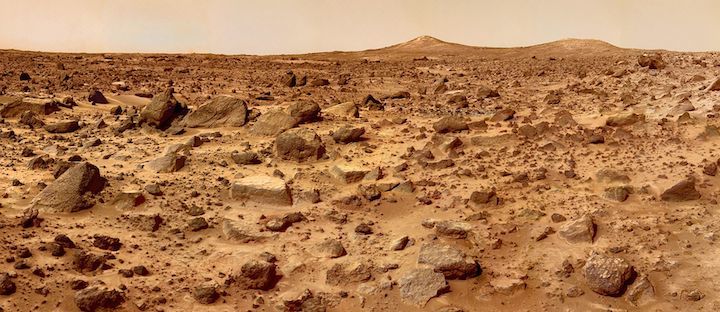22.11.2017

Panorama from the Mars Pathfinder landing site.
Is there life on Mars? This is one of the most salient questions in extraterrestrial exploration, but it could be jeopardized by dirty spacecraft carrying Earth microbes. Part of Dr. Catharine Conley’s job, as NASA’s planetary protection officer since 2006, is to prevent that from happening.
In 2011, she discouraged planned visits to “dark streaks” and other “Special Regions” on Mars that might prove breeding grounds for Earth microbes, since the rover was not fully sterilized.
But one does not protect planets without making enemies along the way. With her job now up for grabs, some scientists have unleashed criticisms of Conley’s decision to limit the Curiosity rover’s exploration on Mars.
Alberto G. Fairén, a visiting scientist at Cornell who leads the charge against NASA’s current planetary protection policies, told the HPR that such policies are “hampering a serious search for life on Mars.”
However, sensible planetary protection policies mitigate hazardous consequences that could harm both the search for life on Mars and the prospect of extraterrestrial human settlement. Take, for instance, a bacterium recently identified by a group in the Netherlands that converts carbon dioxide to limestone. While this could be used to make self-healing cement, if it entered a water source, say on Mars, it would freeze up the supply. Preventing such contamination is important to allow for humans to explore and live on Mars in the future.
However, Fairén is not concerned — he believes that Earth microbes have no chance of surviving on Mars. “There is no study to date demonstrating that an Earth microbe could produce a viable microbial ecosystem under the complete range of conditions on the surface of Mars,” he told the HPR.
While Fairén is correct, Earth microbes can thrive in Special Regions on Mars that provide shelter from ultraviolet radiation and a reasonable amount of nutrients..
Fairén argues that even if Earth microbes survive on Mars, it will still be possible to distinguish between them and potential Martian life forms. While this might be the case if Mars life uses a fundamentally different system of encoding genetic information, the issue of background contamination from Earth microbes could persist. “It’s like trying to look at stars when the Sun’s out,” Conley explained.
However, due to the long history of asteroid transfer between Earth and Mars, both Fairén and Conley agree that the building blocks of Earth life, RNA and DNA, could have been homogenized between the two planets. If this is the case, Conley says, there is no reason to believe that we could distinguish Earth life from Mars life. Conley pointed to a new studythat reported the discovery of over a dozen new phyla of deeply branching, or ancestral, microbes—“so deeply branching, that if you had found them in a sample from Mars, you would think they were Mars life, not Earth life.” In such a case, it may well prove impossible to figure out whether Mars life even exists.
What is the ultimate goal of Mars exploration? If you ask global luminaries Buzz Aldrin, Elon Musk, Stephen Hawking, or Jeff Bezos, it is to establish permanent human settlements on the red planet. Conley’s planetary protection policy serves as a safeguard for this vision, protecting against potentially disastrous consequences of Earth microbes on Mars that could endanger human survival.
Mars is a unique opportunity for humanity to start with a clean slate. “All of us suffer from the consequences of unintended transfer of organisms from one place to another,” Conley mused, pointing to tetanus and syphilis as examples. “I think this has been the first, and only example in human history where humans have been able to control things and say, ‘We’re not going to repeat mistakes we’ve made in the past.’”
Quelle: Harvard Political Review
